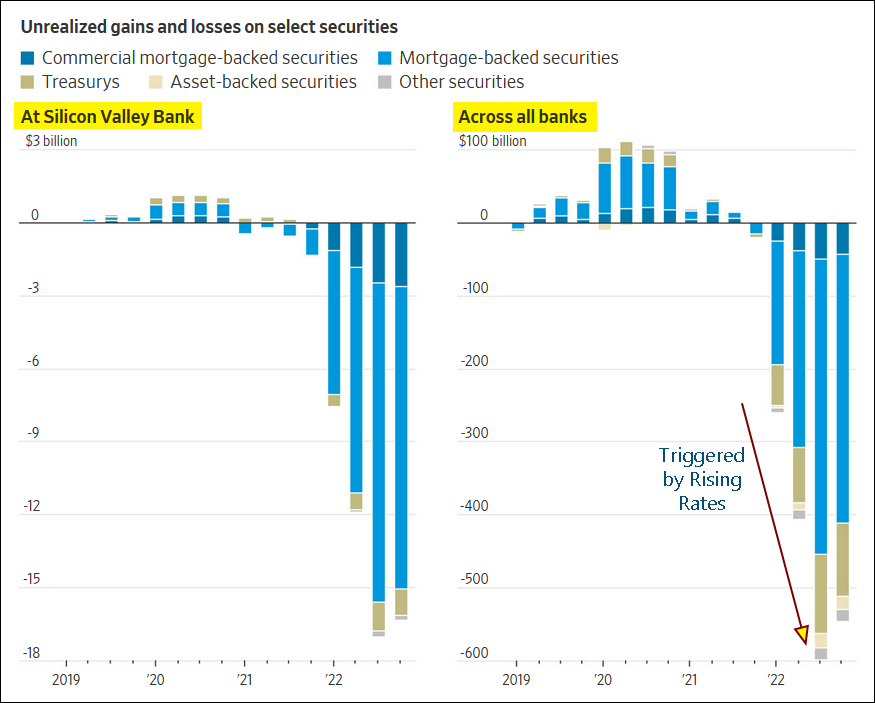The Market Waits
The Federal Reserve raised interest rates by a quarter point to manage inflation, but faces a conundrum.
The Federal Reserve has opened a new short-term loan facility to address a liquidity crunch.
The negative market action is being masked by the performance of the largest companies.
The market can drift higher from its oversold condition, but it will closely watch the banking crisis which will dictate market action for the coming weeks.

Last week, the Federal Reserve raised interest rates by a quarter point in its effort to manage inflation, while offering some soothing commentary on a potential end to rate hikes to address the crisis of confidence in the banking sector, which has seen deposits flee smaller banks. This move helped to ease market concerns, although the broader economic landscape remains uncertain.
The market uncertainty is seen in the yield behavior, with short-term yields rebounding and suggesting that higher interest rates may be factored in for the coming months, while longer-term yields remained steady after a sharp decline, indicating that the market expects slower growth in the future.
The Unfolding Crisis
Last week, the Federal Reserve raised interest rates by a quarter point in its effort to manage inflation, while offering some soothing commentary on a potential end to rate hikes to address the crisis of confidence in the banking sector, which has seen deposits flee smaller banks. This move helped to ease market concerns, although the broader economic landscape remains uncertain.
The market uncertainty is seen in the yield behavior, with short-term yields rebounding and suggesting that higher interest rates may be factored in for the coming months, while longer-term yields remained steady after a sharp decline, indicating that the market expects slower growth in the future
Federal Reserve Faces A Conundrum
One conundrum that the Fed faces is that while increasing interest rates is a reasonable action to control inflation, it also risks increasing the burden on banks with stressed loan portfolios. The chart below shows the extent of the unrealized losses that the banking industry is facing in its portfolio from the present cycle of interest rate increases.
At the end of 2022, about $8 trillion of deposits were uninsured, which was up 41% from the end of 2019, driven by pandemic-fueled savings. The largest exposure is in the mortgage-backed securities segment, where the banks invested the deposits and fueled the 2020-21 housing boom. These are unrealized losses that will extinguish if the bank holds the debt to maturity. However, tighter credit conditions can force some banks to liquidate, which can then lead to realized losses.
To address this potential crunch, the Federal Reserve has opened a new short-term loan facility, the Bank Term Funding Program (BTFP), this month, and $164 billion has been borrowed so far. The Federal Reserve's future rate policy will continue to incorporate the sensitivity of banks to further unrealized losses.
Market Action
The market breadth has narrowed substantially this month, with fewer sectors and industry groups participating. The negative market action is being masked by the performance of the largest companies, towards which investors have turned in this time of uncertainty.
While the S&P 500 (SPY) performance is flat for March, if calculated as an equal-weighted index, the S&P 500 is down 5% for the month. This difference is due to the performance of behemoths like Apple (AAPL), Microsoft (MSFT), Amazon (AMZN), and Meta Platforms (META), which has powered the S&P 500 benchmark this month.
In our opinion, the market can drift higher from its oversold condition, but a couple of key points the market will closely watch are how the First Republic Bank (FRC) emerges from the crisis in the weeks ahead and if regional banks begin to steady and regain lost valuation.
The market will react positively to a quick resolution of the First Republic Bank issue, which appears to be amongst the most affected by the crisis after Silicon Valley Bank (SVBI) and Signature Bank (SBNY). At the same time, further signs of bank stress can push the market toward October lows.
A key inflation report, the Personal Consumption Expenditures Price Index or PCE, will be reported on Friday. Portfolio exposure should be monitored and calibrated based on risk profile during this period of heightened uncertainty.
More By This Author:
Market’s Biggest Week This Year As The Fed MeetsBiotech Bonanza: 2023 Biotech Outlook As The Fed Remains Hawkish
Stocks Get Closer To A Surge




